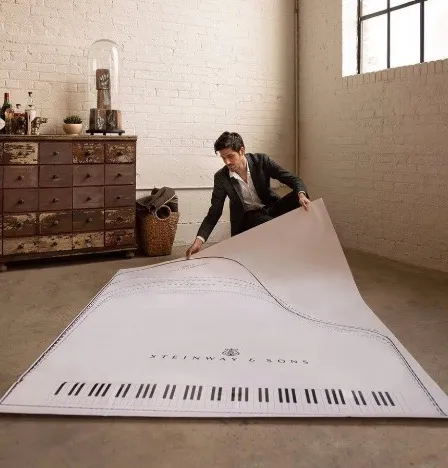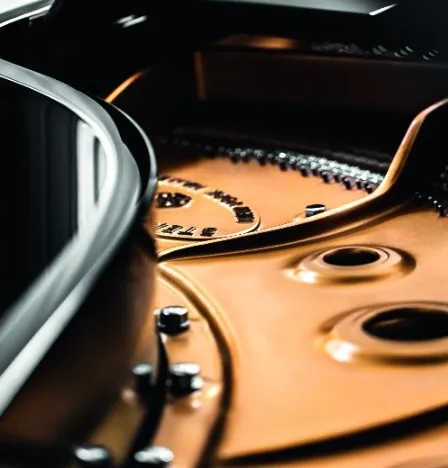A piano without a pianist? Discover the wonderful world of player pianos.
Are you passionate about the piano but have you never learned to play it yourself? Then a self-playing piano, a so-called player piano, could be the perfect solution to realise your dream and enjoy piano sounds in your living room every day! Are player pianos actually that new? And what different options are available today? You'll find out in this blog post.
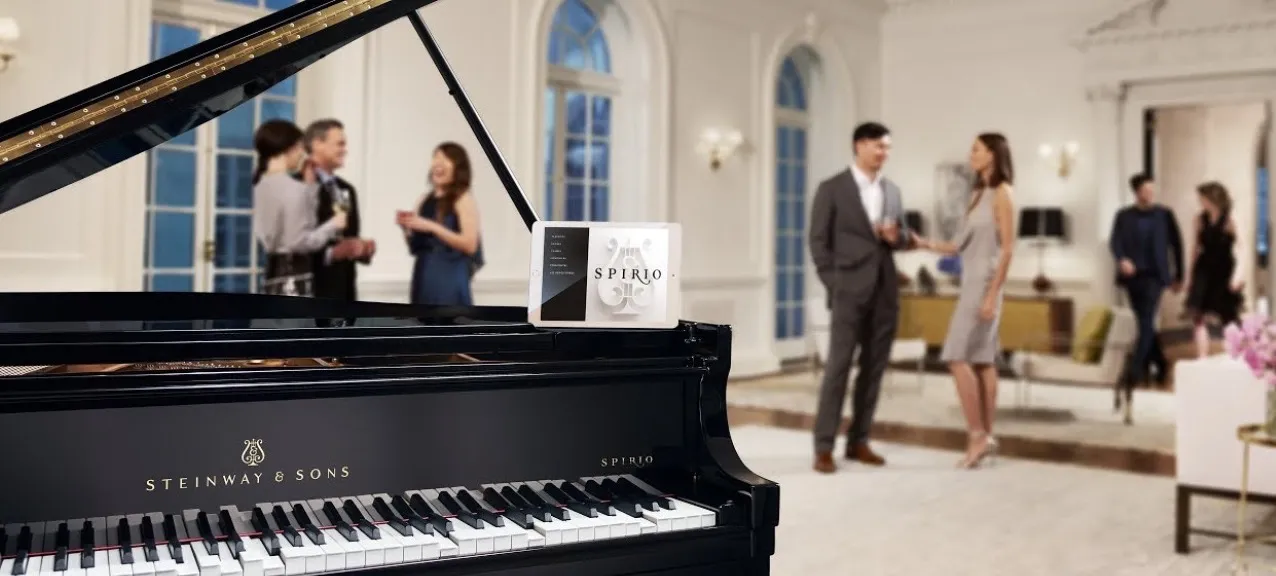
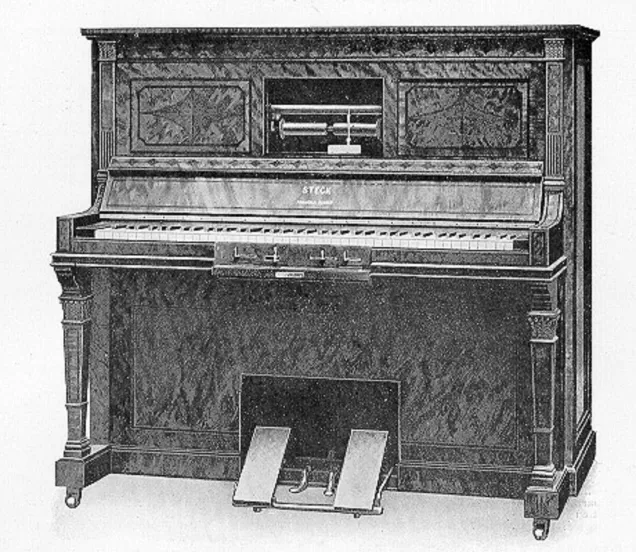
Are player pianos new?
Self-playing pianos have a long history dating back to the late 19th century. At that time officially called 'player pianos', they were launched in the United States in 1897 by the Aeolian company under the brand name 'Pianola'. This term later became a generic term for all self-playing pianos.
A few years later, the instruments also appeared in Europe and were hugely popular in a lot of living rooms, taverns and public places. At the time, they were considered a true status symbol. One in three instruments left the factory as a pianola. At the time, it was one of the few ways to listen to music without the presence of a musician. Most active in Europe were German manufacturers Hupfeld and Welte, the latter of which also supplied self-playing systems to the world-famous piano builder Steinway & Sons.
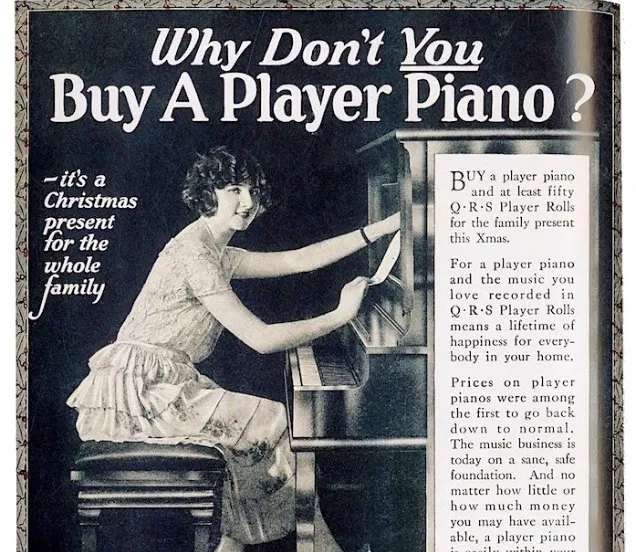
The pianolas worked with a pneumatic system operated by two pedals. The system was powered by paper music rolls with holes, a similar operation to that of e.g. barrel organs. Millions of music rolls were produced, including by the US company QRS, which is still active in the self-playing piano market today. Like modern self-playing pianos, these instruments could simply be played by a pianist.
Player pianos continued to play a prominent role until the late 1920s, but they gradually disappeared from the scene with the rise of the radio and the gramophone record.
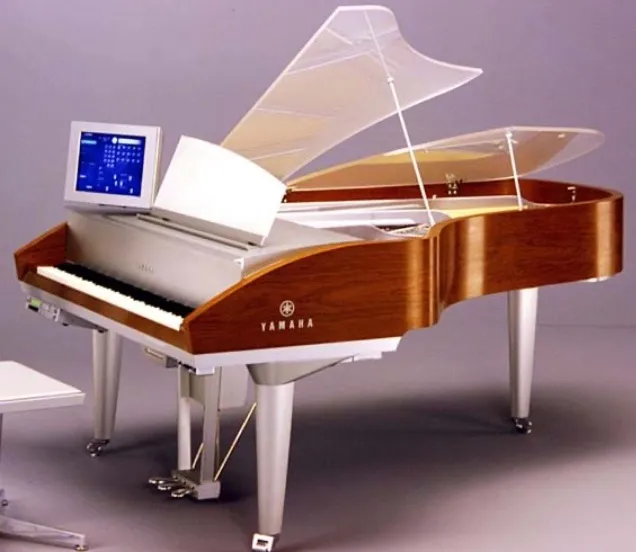
Comeback in the '80s
After a long period of absence, self-playing pianos made a comeback in the 1980s with the rise of cassette players, followed by floppy disks and CDs. Today, self-playing instruments are always controlled completely wirelessly via tablets and smartphones. In 1987, piano maker Yamaha launched the Disklavier systems, which still exist today and have been further perfected.
Acoustic pianos were equipped with a computer, which, by reading data on a floppy disk or CD, could mimic a piano performance and in great detail. Keystrokes and pedal action were no longer activated pneumatically, but electromagnetically with sensors and solenoids. Moreover, the Disklavier system offered the possibility of making and replaying recordings.
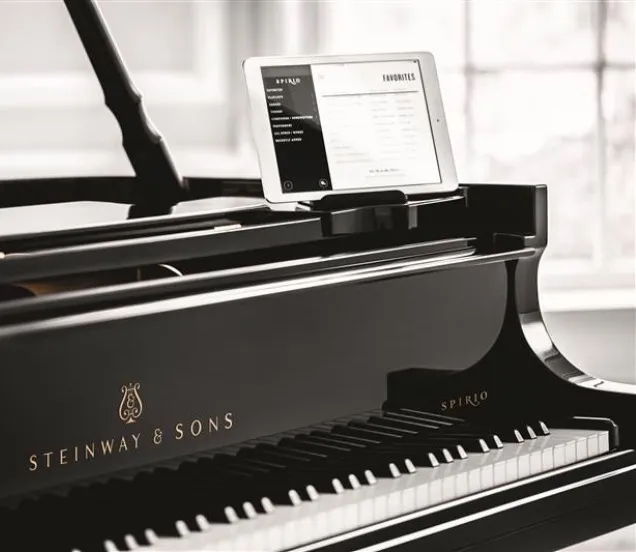
Modern self-playing pianos
Today's self-playing pianos have made huge technological advances in recent years, mainly reflected in improved sound resolution and user-friendliness. The more advanced systems allow you to both record and play back. Moreover, they have ample content libraries that are fully digitised. You can control the instruments easily and wirelessly via tablet or smartphone.
The two manufacturers that have been leading the way in self-playing pianos in recent years are Steinway & Sons with the Spirio system, and Yamaha with the Disklavier Enspire system. These systems are built in from the moment the instrument is manufactured. The QRS PNOmation system can be installed afterwards on other brands. We list them below.
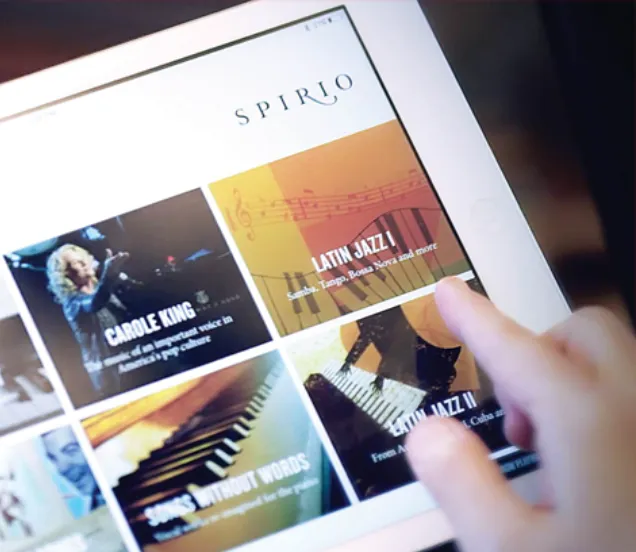
Steinway & Sons - Spirio
With the Steinway Spirio system, the primary focus is, of course, on the instrument itself. A Steinway with Spirio remains a Steinway: leading in every way.
Steinway & Sons officially launched the Spirio system in 2016. The Spirio system is already installed during the production of the instrument, making it appear invisible as well. So apart from the power cable, there is no apparent hardware on the instruments. Steinway Spirio is currently available in Europe on models D-274, B-211 and O-180.
In 2019, Steinway introduced the Spirio | r (record), where it is now also possible to make recordings and have the piano reproduce these. Via the Spirio app, you can also edit and customise your recording, down to the smallest details. Or how about a quatre mains with yourself? The standard system was renamed Spirio Play. The Spirio | r system is available in Europe on models D-274 and B-211.
The Spirio system uses proprietary software to measure hammer speed up to 800 times per second at up to 1,020 dynamic levels. That's more than the human senses can perceive. It also records pedal use up to 100 times per second for as many as 256 pedal positions. The Spirio catalogue is recorded at the highest possible resolution of any system available today. This ensures extremely accurate reproduction and a sublime musical experience.
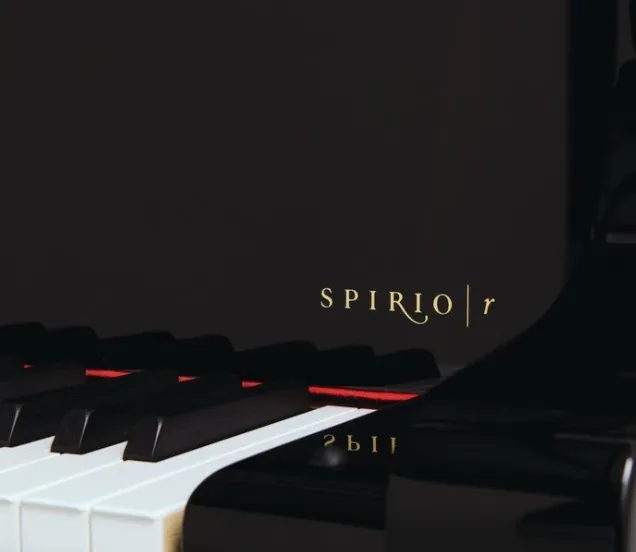
Steinway & Sons makes a free library available to Spirio users, with thousands of recordings, including classical, jazz and contemporary. You can access this library via the Steinway & Sons Spirio app on an iPad, which is also included with the purchase of a Spirio. All music is recorded live by Steinway artists in their own recording studio and the library is expanded weekly. The top artist in question plays live in your living room, so to speak. This 'live music' can even be combined with video images, so you can see the artist playing simultaneously on your tablet or television screen.
In late 2021, Steinway launched the Spiriocast technology, which allows multiple instruments to be linked together. This allows musicians to capture a live performance on their Spirio and share it virtually with others. Imagine hitting a single key on a piano and at the same time, it moves hundreds or even thousands of instruments, that is the magic of Steinway Spiriocast. In short, Spiriocast allows a performer to reproduce their performance in real time between multiple Spirio instruments. Currently, this functionality is only available for Spirio systems with record function, but this will be extended to all Spirio pianos in the near future.
The Spirio system thus ensures an even better return on investment for a Steinway grand piano!
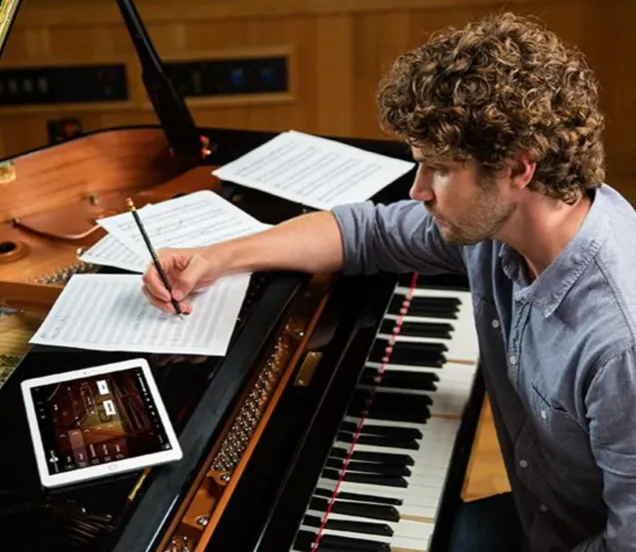
Yamaha - Disklavier Enspire
Yamaha aims at a different audience with the Disklavier Enspire system. Apart from the fact that the instruments are also self-playing, the system is especially unique in that a built-in sound module is available, allowing you to play digital samples as background music - just like on a digital piano.
For a very long time, the Disklavier E3 system was the top system but was eventually succeeded in 2016 by Disklavier Enspire. This is built in during the production of the instrument, and so cannot be retrofitted to older Yamaha instruments or other brands.
The Enspire system has a discreet control panel that is almost invisible to the user. All functionalities can be accessed and controlled via the Yamaha Enspire app, which is compatible with iOS or Android devices. As an owner, you have free access to 500 built-in songs, including multiple stereo audio recordings. Through the Yamaha MusicSoft store, users can purchase more than 6,000 additional songs. You also have access to internet streaming services such as Disklavier Radio and Disklavier TV. All Disklavier instruments are equipped with a full Yamaha silent system.
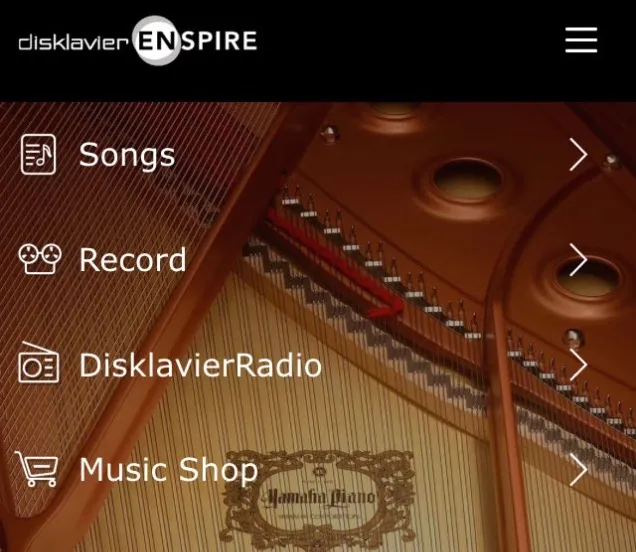
There are 2 versions available on the European market. The Enspire ST system can be combined with several upright pianos and Yamaha's smaller grand pianos. The Enspire PRO system is available starting from the Yamaha C3X, and offers even greater recording and playback accuracy: more than 1,000 levels of key and hammer speed and 256 pedal positions. The PRO systems use AccuPlay, an advanced DSP servo-drive system, providing even greater performance reproduction.
Disklavier Enspire is thus aimed more at the creative musician, who composes and records, but prefers not to do so on a digital piano. The Disklavier Enspire has a slight edge in reliability over systems that are retrofitted, and the recording system is also more advanced. Therefore, it is also ideally suited to professional applications such as performances and teaching.
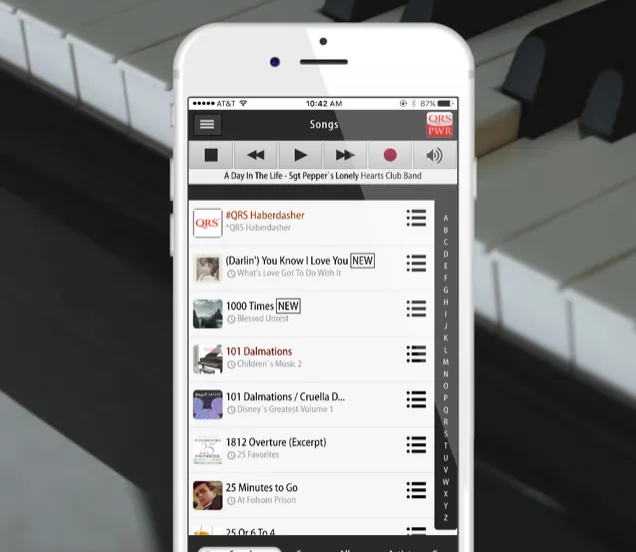
QRS PNOmation
QRS has been in the business of self-playing pianos since 1900 and offers one of the better piano libraries on the market, including SyncAlong, which allows the piano to play along with the content of original artists. Of course, unlike 100 years ago, today's QRS systems are no longer controlled by piano rolls, but by digital files. The QRS PNOmation systems can be installed in virtually any piano, by a QRS trained and certified technician.
The QRS PNOmation III system, the latest version, has a library of more than 10,000 songs. These can be purchased by song or album, or users can also purchase an all-access plan for the entire QRS music library. The instruments can be easily and wirelessly controlled via a web-app user interface on a tablet, smartphone or PC. You also have full control over all parameters, settings and how the music is played, without the need for a technician. The QRS system includes integrated Bluetooth MIDI and Bluetooth Audio. A QRS Record variant is also available, where you can make and reproduce recordings. Like Yamaha Disklavier, QRS also features a built-in sound module, where you can, via included speakers, have background music played synchronously.
Which self-playing playing suits me best?
If you dream of a self-playing grand piano but want to keep the budget down, Yamaha Disklavier or QRS could be a good solution. For professional musicians who want to make recordings and edit them digitally, Yamaha Disklavier pianos are a great choice.
If you want the very best experience of a self-playing grand piano with unlimited possibilities, then investing in a Steinway Spirio is definitely worth considering. You can enjoy your favourite artists daily and dream away to the beautiful Steinway sounds, all in your living room. Or maybe you could have your Spirio grand piano playing in the background at a party or reception, without having to hire a pianist?
Want to come and discover and compare the self-playing grand pianos for yourself? Then get in touch and visit one of our showrooms.


